
 Podcasts
PodcastsCatch the latest PR news & updates with PRovoke Media's PR Podcasts. Lifting the lid on key industry stories & trends, join our listeners of PR podcasts today.
 Videos
VideosLatest video interviews and campaigns from PRovoke Media, previously known as the Holmes Report.
Long-form journalism that analyzes the issues, challenges and opportunities facing the business and practice of PR.
 Profiles & Interviews
Profiles & InterviewsExplore PR profiles and interviews with leaders from the marketing and PR worlds.
 Crisis Review
Crisis ReviewPR Crisis & Business Crisis review. PRovoke Media's annual analysis of the top reputation crises to rock the corporate sector. Read on here.
 Coronavirus
CoronavirusPRovoke Media's coverage of the Covid-19 crisis, focusing on corporate communication, public affairs & PR industry fallout.
 Trend Forecasts
Trend ForecastsPRovoke Media's PR Trends round up. PRovoke Media's annual forecast of PR trends and news that will impact the PR world in the year ahead...
 Social & Digital
Social & DigitalDedicated to exploring the new frontiers of PR as it dives deeper into social media, content and analytics.
 Technology
TechnologyOur coverage of key technology PR trends and challenges from around the world of digital communications.
 Consumer
ConsumerFrom brand marketing to conscious consumerism, coverage of key marketing and PR trends worldwide.
 Employee Engagement
Employee EngagementPRovoke Media's coverage, analysis and news around the rapidly-shifting area of employee engagement and internal communications.
 Sports Marketing
Sports Marketing Sports PR news, diversity & inclusion trends, views and analysis from PRovoke Media. Subscribe today for the very latest in the world of sports communications.
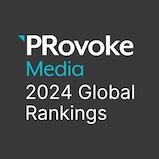 Global PR Agency Rankings
Global PR Agency RankingsPRovoke Media's definitive global benchmark of global PR agency size and growth.
Enter PRovoke Media's 2024 Global 250 Agency Ranking and/or our Agencies of the Year competitions now.
 Agencies of the Year
Agencies of the YearPRovoke Media's annual selections for PR Agencies of the Year, across all of the world's major markets.
 Innovator 25
Innovator 25PRovoke Media profiles marcomms innovators from across North America, EMEA and Asia-Pac.
 Creativity in PR
Creativity in PRIn-depth annual research into the PR industry's efforts to raise creative standards.
 Asia-Pacific Communication Index
Asia-Pacific Communication IndexAPACD/Ruder Finn annual study of Asia-Pacific in-house communications professionals.
 SABRE Awards
SABRE AwardsThe world's biggest PR awards programme, dedicated to benchmarking the best PR work from across the globe.
 PRovokeSummit Global
PRovokeSummit GlobalThe biggest PR conference of the year, a high-level forum designed to address the critical issues that matter most.
 PRovoke Media Regional Series
PRovoke Media Regional SeriesA global network of conferences that explore the innovation and disruption that is redefining public relations.
 Agencies of the Year
Agencies of the YearUnrivalled insight into the world's best PR agencies, across specialist and geographic categories.
 Roundtables
RoundtablesOur Roundtables bring together in-house comms leaders with PR firms to examine the future of communications.
 Agency Playbook
Agency PlaybookThe PR industry’s most comprehensive listing of firms from every region and specialty
.jpg) All Jobs
All JobsFind the latest global PR and communications jobs from PRovoke Media. From internships to account executives or directors. See all our PR jobs here.
PRovoke Media's editorial series published in collaboration with partners.

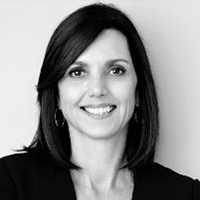
Beth Comstock’s promotion to vice chair leading GE Business Innovations seemed like an inevitable accomplishment given her career trajectory from corporate communications into broader management roles. Not only is this a groundbreaking achievement for communications, Comstock also becomes the first woman in GE’s history to be named vice chair and joins three other executives who hold the title.
As vice chair, she operates GE Business Innovations, which develops new businesses, markets and service models and drives brand value and partners to enhance GE’s culture. This unit includes GE Lighting, GE Ventures & Licensing and GE sales, marketing and communications.
She began her career in local television production in Virginia—including a brief time on camera—before making the move into public relations, holding communications and publicity jobs at CBS and Turner Broadcasting before joining GE’s NBC unit in 1993 as vice president of NBC News communications. Comstock was named a GE company officer in 1998 when she became vice president of corporate communications. She was named GE’s first chief marketing officer in more than 20 years in 2003 and also served as president of integrated Media at NBC Universal.
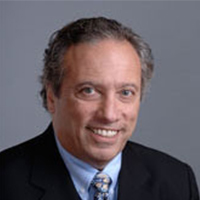
David D’Alessandro was perhaps the prototype for public relations executives seeking to expand beyond the communications function and into the C-suite.
Having started his career in the public relations agency business at Edelman (Orville Redenbacher was a client), he made the move to the client-side of the business in 1984, joining Boston-based financial services company John Hancock to spearhead communications. Once there, he expanded his remit to include marketing—masterminding the company’s celebrated “Real Life, Real Answers” advertising campaign and writing “Brand Warfare,” a well-received marketing tome that drew on his experience in PR to present a holistic view of brand-building.
He was named president and COO in 1998 and was lead strategist of the firm’s demutualization and conversion to a public company, In 2000 he became chairman and CEO and presided over Hancock’s merger with Manulife, serving as president and COO of the merged company until his retirement in 2004.
His current role, chairing the board of Seaworld, provides plenty of opportunity to draw on his PR experience as the company navigates its own crises. In June, D’Alessandro didn't win re-election at the company’s annual meeting Wednesday after a controversy related to incentive payments. The board will determine what happens with his role next.
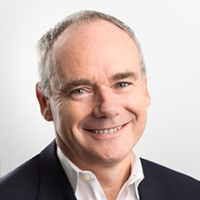
John Fallon’s trajectory is especially unique — he joined the education company as director of communications in 1997 and within three years was named president. He’s been the company CEO since 2013, taking on the job of “encouraging all 40,000 colleagues, in 70 countries, to work as one global company.” Before this, since 2008, he had been responsible for the company’s education businesses outside North America and a member of the Pearson management committee.
In 2003, he was appointed CEO of Pearson’s educational publishing businesses for Europe, Middle East & Africa. Prior to joining Pearson, John was director of corporate affairs at Powergen plc, and was also a member of the company’s executive committee. Earlier in his career, Fallon held senior public policy and communications roles in UK local government. He is an advisory board member of the Global Business Coalition for Education and a member of the Council of the University of Hull.
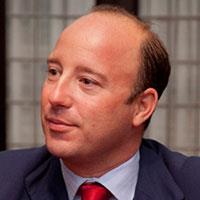
In December of 2016, Juan Manuel Cendoya—longtime head of corporate communications for Banco Santander—was named vice chairman of the board of directors for Santander Spain, an unusual promotion for a public relations executive.
“Our clients know us to be a trustworthy, strong and solid brand, and this a reputation we aim to keep,” according to Cendoya, who led corporate communications and marketing for Santander, one of the few financial services companies that can look back at the global crisis of recent years with any satisfaction, having diversified into emerging economies such as Brazil and via acquisition into established markets such as the US and the UK.
The bank operated under more than 20 separate names in 2004, but the emphasis since then on building the Santander brand has paid off. Cendoya has played a major role in that, leading the group’s internal and external communications, corporate marketing, corporate social responsibility, institutional relations, economic research and public policy and serving as a member of the bank’s global executive committee.
Can you share a moment in your career that you recognized PR’s direct impact on business performance?
We have a very broad, strategic approach to PR at Santander as we believe PR has to be a reflection of the bank’s mission, values and behaviours. PR needs to be backed and strongly supported by business performance, not the other way around. When there’s a gap between the message you want to convey and what’s truly happening in the business, it will not work in the long run. I believe PR is strongly linked to reputation, corporate culture and brand building. It is about communicating to our stakeholders what we do and how we do things. Santander’s mission is to help people and businesses prosper and that is what we are building on as a whole throughout the Group. Fostering our corporate culture, led by our Executive Chairman, Ana Botín, is my top priority right now.
What are the industry’s biggest challenges and opportunities?
It is not different to the challenges and opportunities other industries are currently facing. The world is changing rapidly. Digitalisation involves a profound transformation in the way people interact and that affects us at the very heart of our core activity: communicating to others. From a more financial industry perspective, digitalization is of course a huge challenge for banks, but also a source of opportunity for future business growth. Banks will definitely be different in coming years, becoming open, financial platforms providing a broad variety of value-added products and services to customers. I would also say rebuilding the industry’s reputation and enhancing trust towards banks following one of the worst financial crises in history is a challenge we, as a sector, will have to continue to work hard on.
How do you handle the unexpected?
Trying to look for ways to expect the unexpected! Putting sound contingency plans in place is essential and having good, strong, engaged teams makes a huge difference.
How do you relax?
Doing sport, reading and and spending time with family and friends.
Book/movie/TV show/podcast that teaches you valuable lesson about PR?
I love history and have recently watched the series The Crown on Netflix. The first part of the series is extremely interesting from a PR professional’s standpoint.
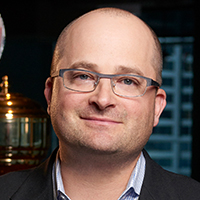
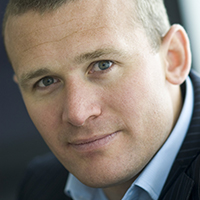
Entrusted with building and protecting Abu Dhabi’s reputation, Pearce has a big budget and an even bigger remit. He is considered one of the UAE’s most influential officials, particularly close Khaldoun Al-Mubarak, for whom he helped “smooth the communication of the Manchester City Football Club takeover” according to the WSJ.
Since taking on the position in 2006, Pearce has overseen a significant revamp of the Gulf Kingdom’s communications offering, and also plays an important role in key assets such as the Abu Dhabi Grand Prix and media initiative 2454. Pearce came to the Middle East role after a varied life in the agency world, including a lengthy stint at Burson-Marsteller, encompassing positions on four continents and - in his last job at the firm - CEO of Australia.
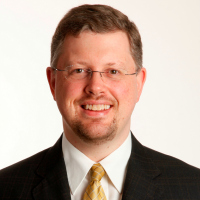
A political communicator in his native Australia, Stephen Forshaw moved into senior public relations and public affairs roles at Singapore Airlines and Microsoft before becoming MD of public affairs at Singapore-owned investment firm Temasek in 2011. In 2013, Forshaw added operational oversight for Australia and New Zealand to his remit, making him on of the few communications leaders to take on business leadership duties. A high-profile advocate for the importance of communications to an organisation’s goals, Forshaw’s work has often featured an adept ability with social media, evidence of a mindset that is constantly questioning the development of public relations in today’s evolving media landscape. Forshaw has also spoken at length about the need to question your organization, rather than becoming “housetrained.”
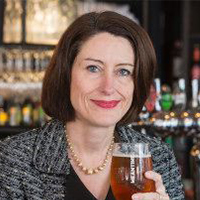
In 2012, Clark became that rarity in the PR world, a communications head who moved into the C-suite to become managing director of SABMiller in Europe. A poised performer who once drew the attention of the national media when she decided to remain at work well after going into labour, she had previously headed the brewing giant's global corporate affairs function for nine years, after amassing significant corporate communications experience at Railtrack and Scottish Power. Clark sits on SABMiller’s executive committee, overseeing all of its public relations, public affairs and corporate responsibility initiatives. In particular, Clark is regarded highly for her expertise in understanding reputation. In 2006, she embarked on an ambitious project to define the factors that drive SABMiller’s reputation in its key markets, following that up by creating a specific job function focused on the company’s reputation.
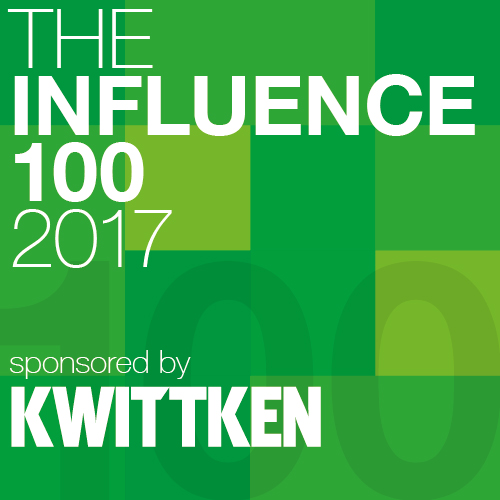

Intelligence and insight from across the PR world.
About PRovoke Media Contact Us Privacy & Cookie PolicyWe feel that the views of the reader are as important as the views of the writer. Please contact us at [email protected]
Signup For Our Newsletter Media Kits/Editorial Calendar Jobs Postings A-Z News Sitemap© Holmes Report LLC 2024